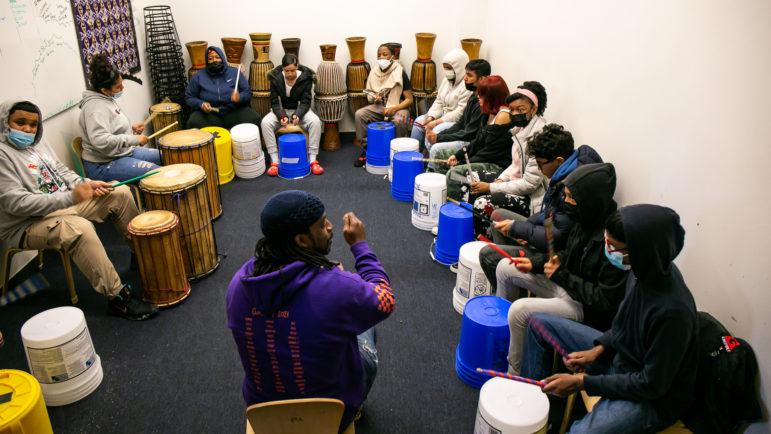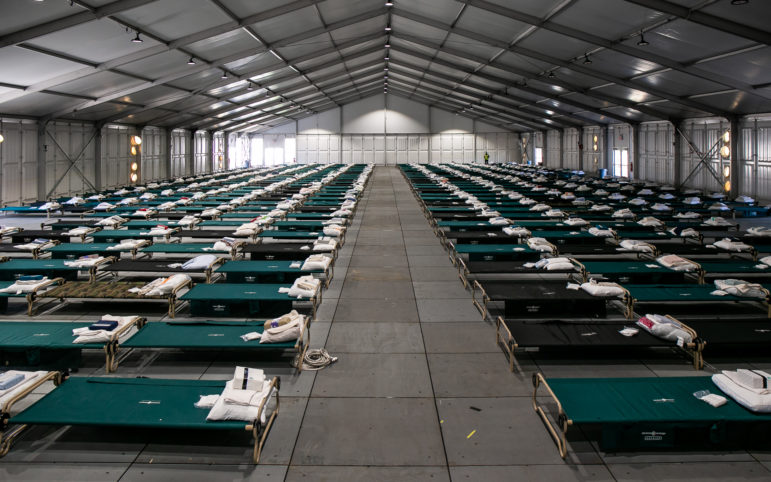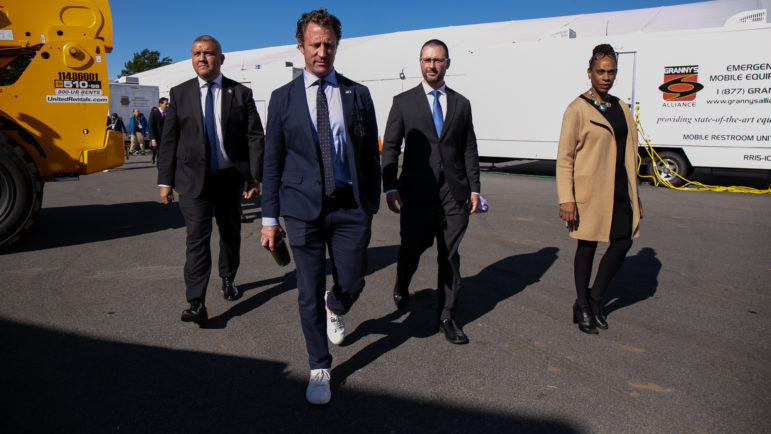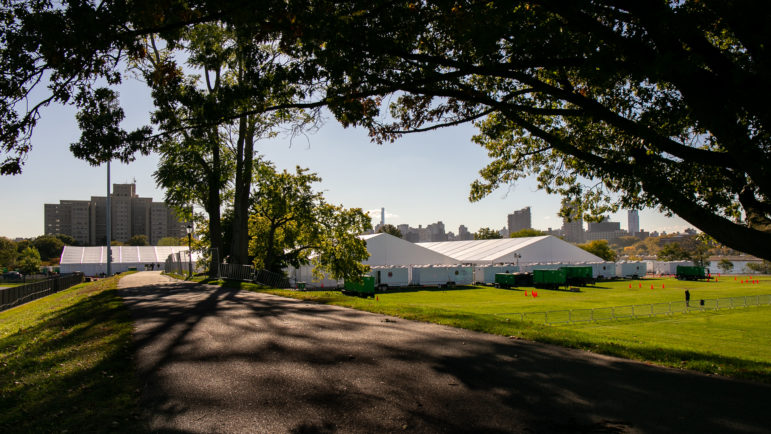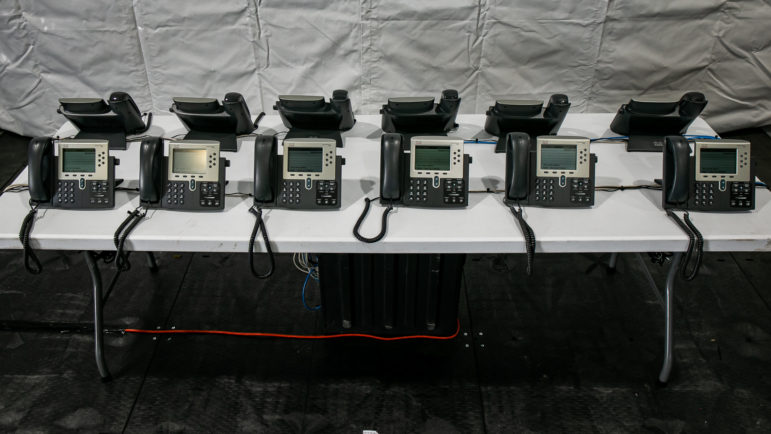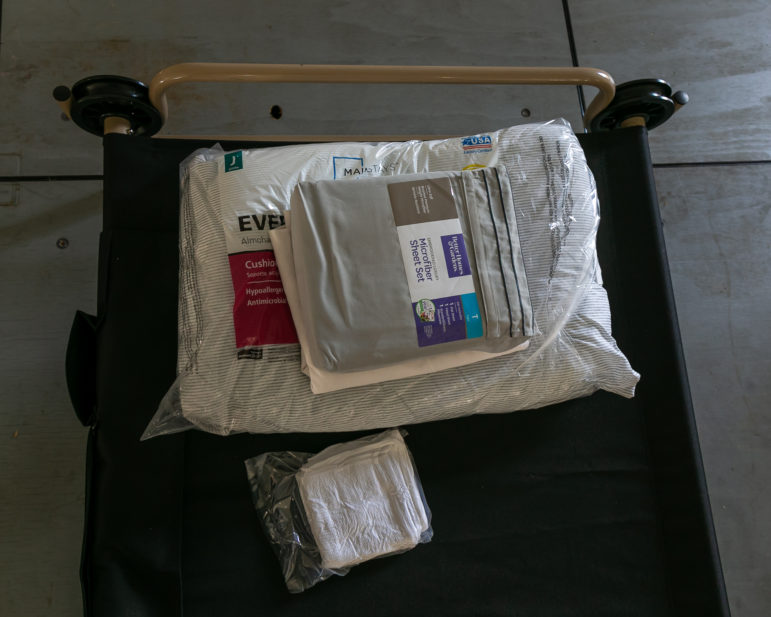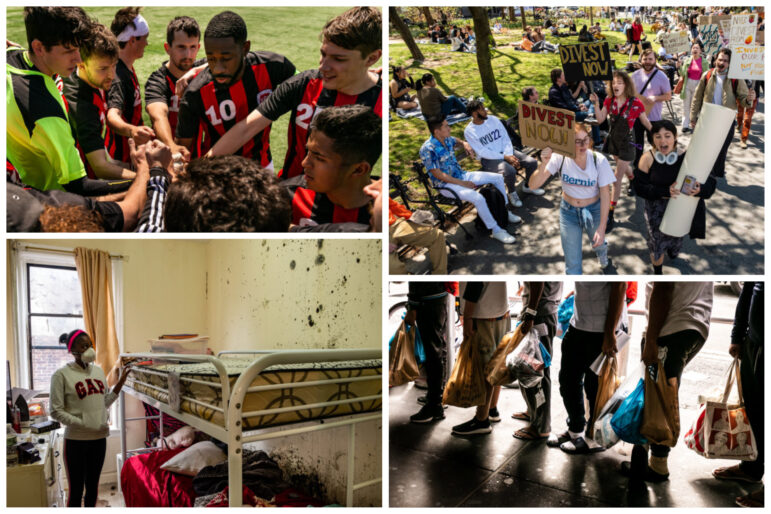
As 2022 comes to a close, City Limits looks back at images that defined some of New York City’s biggest news stories and most pressing policy issues. Below are some of our favorite photos published this year.
Following the 2021 elections, New York welcomed a new mayor and an almost entirely new City Council in January, its most racially diverse cohort of lawmakers ever and the first time the legislative body has been majority women. Below, a shot of new Councilmember Amanda Farías on Castle Hill Avenue in her Bronx district.

Adi Talwar
Home health aide Marilyn Thomas feeding longtime client Nancy Brown her lunch. New York has experienced a severe shortage of home care workers in recent years, fueled in large part by low pay across the industry. The crisis spurred Gov. Kathy Hochul to allocated $7.7 billion in this year’s budget to boost wages for care workers across the state.

Adi Talwar
Nearly two years after New York State adopted a ban on plastic bags, the items are still ubiquitous across the city, an investigation by students in City Limits’ youth journalism training program found. Retailers say compliance is costly, while environmentalists want the state to adopt a more strict and proactive approach to enforcement.
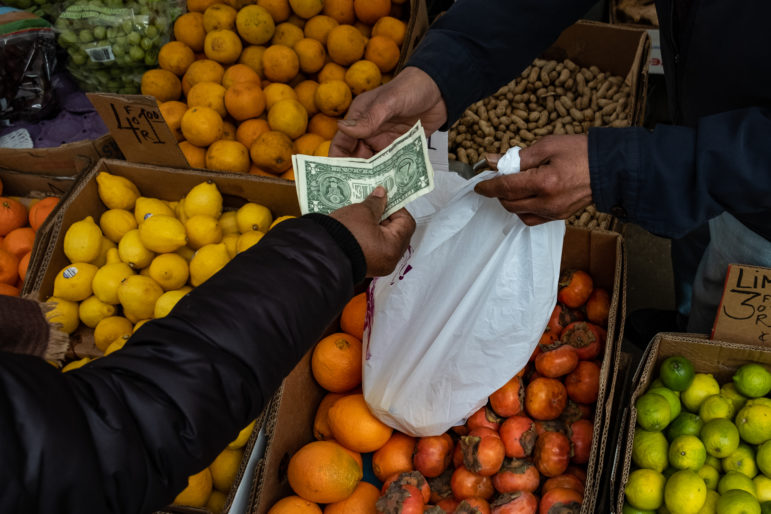
Adi Talwar
Soon after taking office in 2022, Mayor Eric Adams announced a plan to move homeless New Yorkers out of public spaces and subways. “We’ve normalized this dysfunctional city,” he said. “We’ve normalized people living on the street in cardboard boxes.” But the effort—which has included increased “sweeps” of street homeless encampments, and more recently, a directive to forcibly institutionalize those deemed mentally ill—has been criticized as overly punitive by advocates, who say the real solution is more permanent housing and less restrictive shelter options.
Michael Torres, pictured below, told City Limits in March that he’d recently accepted a bed in such a shelter after more than a year sleeping in parked cars and parks. “I don’t need a curfew,” he said at the time. “I just need to eat a bowl of oatmeal and go out looking for work.”
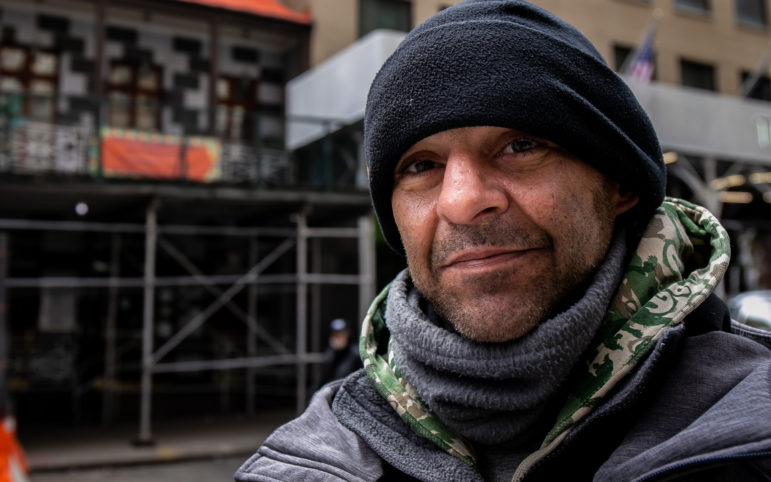
Adi Talwar
Nicholle Nichols in her Washington Heights apartment, where she had been trying for months to get the landlord to fix a persistent mold problem. Tenant attorneys, advocates and policymakers say the delays that Nichols encountered demonstrate the flaws of the city’s code enforcement program, and the limits of a housing court system that can move at a glacial pace when it comes to holding owners accountable for unsafe conditions.
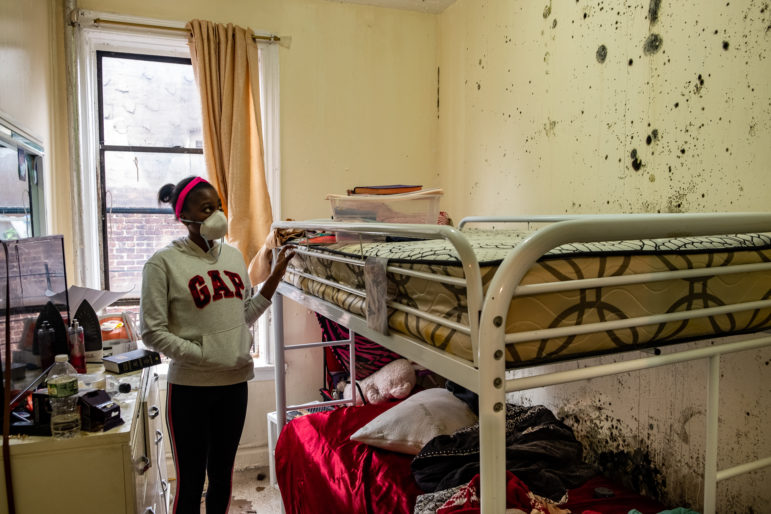
Adi Talwar
An empty polling site in The Bronx during the primary election in June, the first of two primaries held in New York state this year during a chaotic election season. Races for Congress, State Senate and Assembly were complicated by a legal battle over redistricting that threw in a wrench in many candidates’ campaign plans.
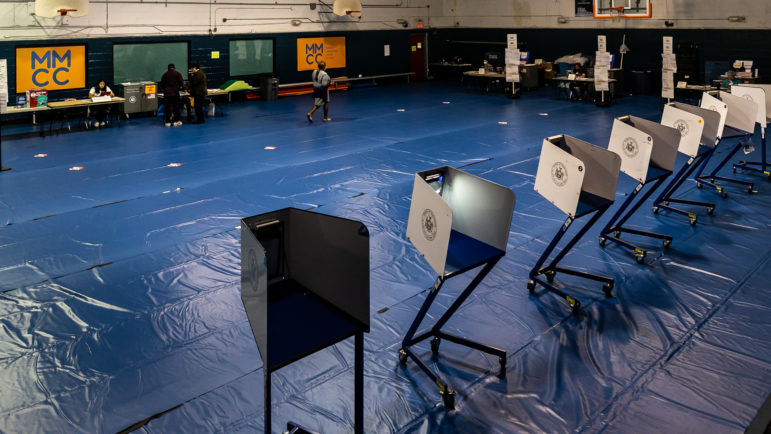
Adi Talwar
Tens of thousands of young people have taken part in climate marches in New York City in recent years, with youth activists playing an important role in demanding local changes around resiliency. Below, New York University students rallied on Earth Day demanding NYU’s endowment divest from fossil fuel companies.
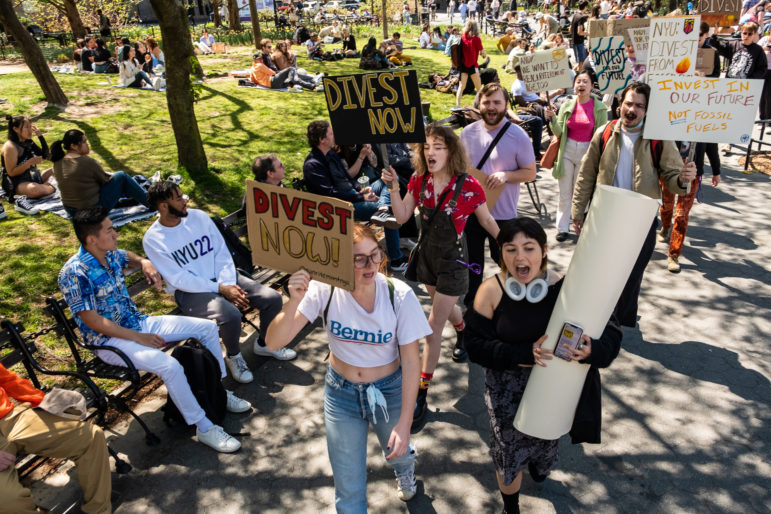
Adi Talwar
After two pandemic years that wrought havoc on all education but particularly on arts classes, advocates and educators have mounted a drive to win more—and more permanent—funding for visual art, music, dance and theater in the city’s schools. Below, images of music, dance and art classes held this year Bronx Community Charter School.
The Ukrainian Sports Club was founded in 1947 as tens of thousand of Ukrainian migrants settled in New York. Today, the team—pictured below at a match in Brooklyn’s McCarren Park in late April—competes in the historic Cosmopolitan Soccer League and continues to serve a special function for generations of immigrants, particularly this year after Russian’s invasion of Ukraine. “We are not in Ukraine and we can’t take up weapons and defend our country, but we can contribute humanitarian aid, contribute to our families there,” one team member told City Limits.

Adi Talwar
This year saw several heated debates over land use proposals across the five boroughs, as the city looks to create more housing to keep up with demand while heeding residents’ concerns over affordability neighborhood character. The City Council in 2022 approved upzonings from private developers—including plans to build new apartments for sites in Astoria (below) and Throggs Neck—as well as a city-initiated rezoning in the Rockaways. Mayor Eric Adams has also proposed neighborhood-level rezonings near future Metro-North stations in the East Bronx and along an Atlantic Avenue light manufacturing corridor in Crown Heights and Bedford-Stuyvesant.
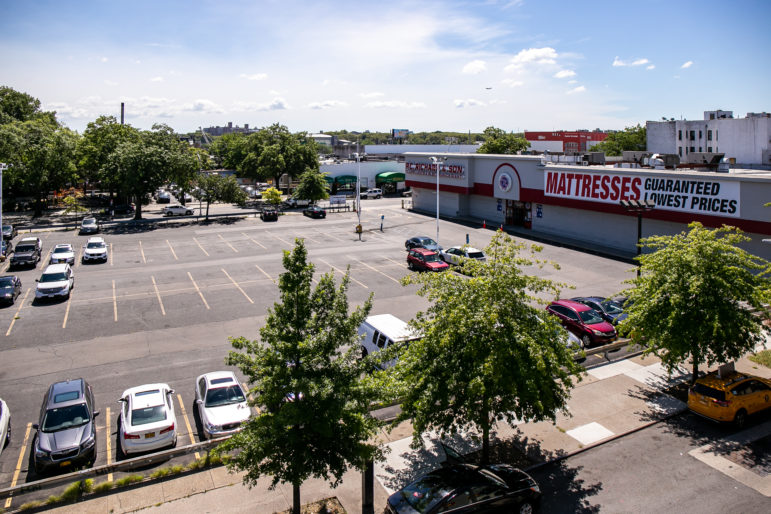
Adi Talwar
Starting in the spring, New York City saw an influx of migrants and asylum seekers from Latin America, many of whom were bused here by Republican governors in southern border states as part of a political stunt. Thousands have entered the city’s shelter system, prompting Mayor Eric Adams to declare a state of emergency. The series of images below captures the scene as one of three buses of asylum seekers from Texas arrived at the Port Authority bus terminal on Aug. 10. “I need to find a job,” Jose Rodriguez, who was staying in a Brooklyn homeless shelter this summer after arriving from Venezuela, told City Limits in Spanish. “My family is in Colombia and waiting for help.”
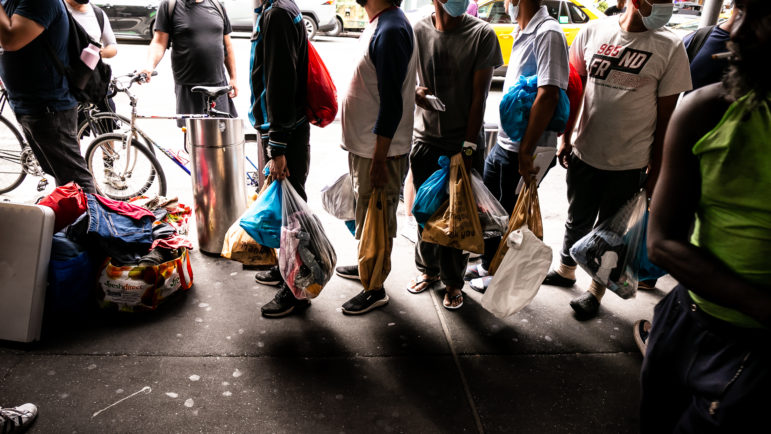
Immigrants who arrived in New York City on one of the three buses from Texas on Aug. 10, waiting in front of Port Authority to be transported to homeless shelters. 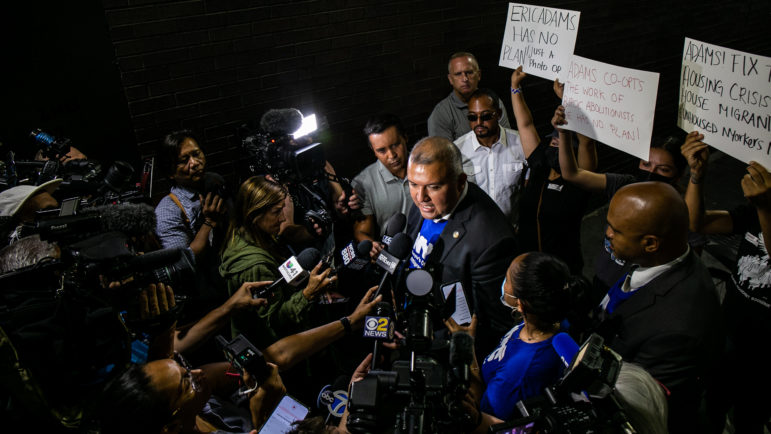
NYC Mayor’s Office of Immigrant Affairs Commissioner Manuel Castro addressing the press at Port Authority in Midtown Manhattan. 
First person disembarking the first of three buses that arrived from Texas at Port Authority in Midtown Manhattan on Aug. 10, 2022. 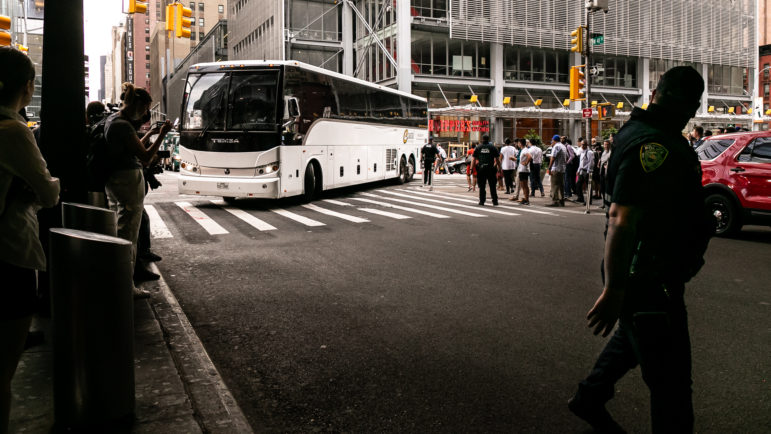
The first of three buses from the Texas border arriving at Port Authority in Midtown Manhattan on Aug. 10.
Mando Martinez, a lifelong resident of the Jacob Riis Houses, holds a can of water provided by the city after NYCHA warned tenants at the development not to drink or cook with their tap water after it tested positive for arsenic in September. The incident turned out to be a false alarm, what officials blamed on a laboratory subcontractor that inadvertently introduced arsenic into the sample, but reignited tensions and distrust between NYCHA tenants and management.
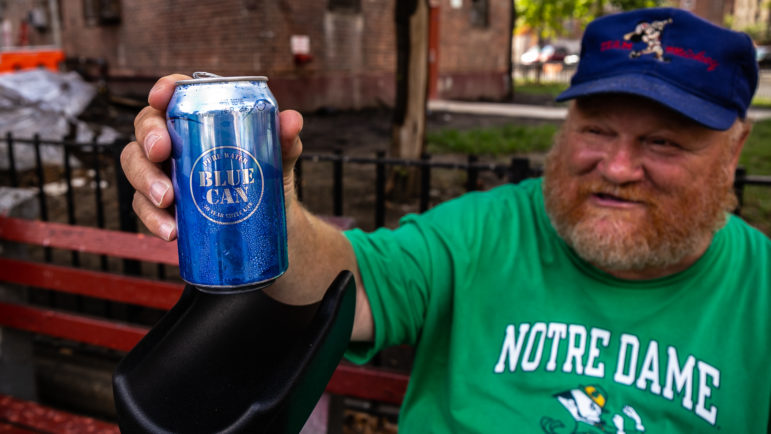
Adi Talwar
Below, a worker at Encore Community Services’ Senior Center packs meals for home delivery. This year, both the city and state budgets included funding for Cost-of-Living-Adjustments (COLA) to boost the wages for human service workers at nonprofits under contract to provide support and essential services to New Yorkers. Even with the pay bump, many nonprofit workers say their low wages make it difficult to justify staying in the sector in the face of increased costs of living and demand spurred by the pandemic.
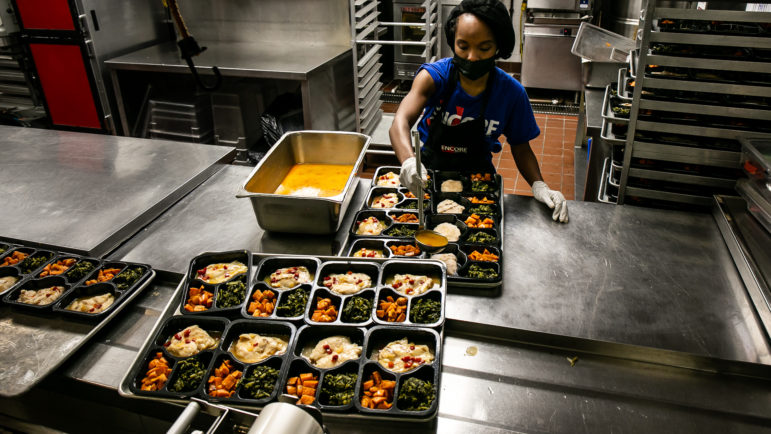
Adi Talwar
L., who asked to go by her first initial to protect her identity, spoke to City Limits this fall while she was staying at a domestic violence shelter with her son and searching for an apartment to move into after. State law caps stays in domestic violence shelters at 180 days, forcing thousands of families in recent years to enter the city’s crowded homeless shelter system when their time runs out.

Adi Talwar
“The transfer has destroyed us,” said a mother whose son, in immigration detention in New York for the last two years, was abruptly transferred from the Orange County Jail upstate to a facility in Mississippi this summer. He was one of dozens of detainees moved from the jail to other ICE facilities without notice, prompting intense criticism from advocates and immigrant families, who have called for New York State to cease contracting with ICE.
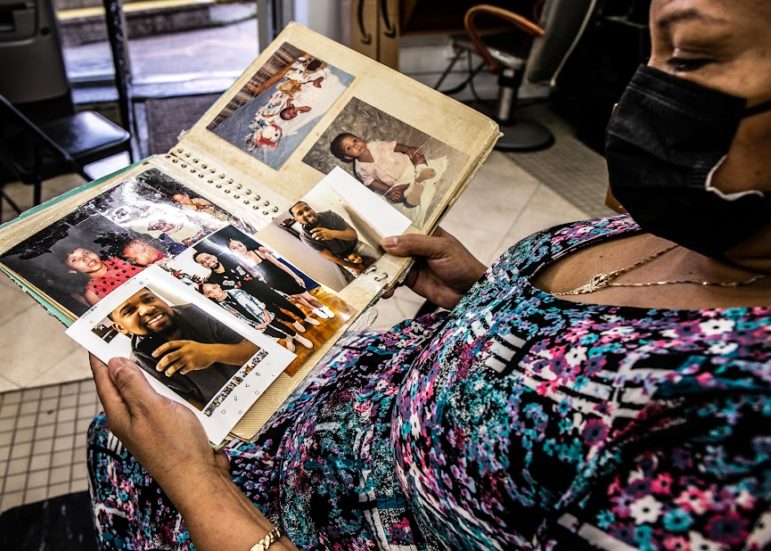
Adi Talwar
In October, Mayor Eric Adams announced the city would be opening a “Humanitarian Emergency Response and Relief Center” or HERRC to accommodate the thousands of asylum seekers who’ve arrived in the city in recent months. But the tent facility on Randall’s Island closed less than a month after it opened, following sparse use and intense criticism from advocates who criticized the lodgings as lacking privacy and adequate shelter from the elements. But facing another uptick in the homeless shelter population, city officials said this month that they might revive the model.
This year, the NYPD has been the leading enforcement agency against street vendors, breaking from an earlier pledge to take them out of the process as part of reforms announced by former Mayor Bill de Blasio. Police issued more tickets to vendors in 2022 by November than the Department of Consumer and Worker Protection (DCWP), a City Limits’ data analysis found, despite the fact that DCWP was put in charge of vendor enforcement last year after passage of the City Council’s street vendor reform law.
Vendors in Jackson Heights, Queens, saw the most enforcement this year by the city’s Department of Consumer and Worker Protection (DCWP), along with several other neighborhoods home to large immigrant populations.

A vendor in Jackson Heights, Queens. 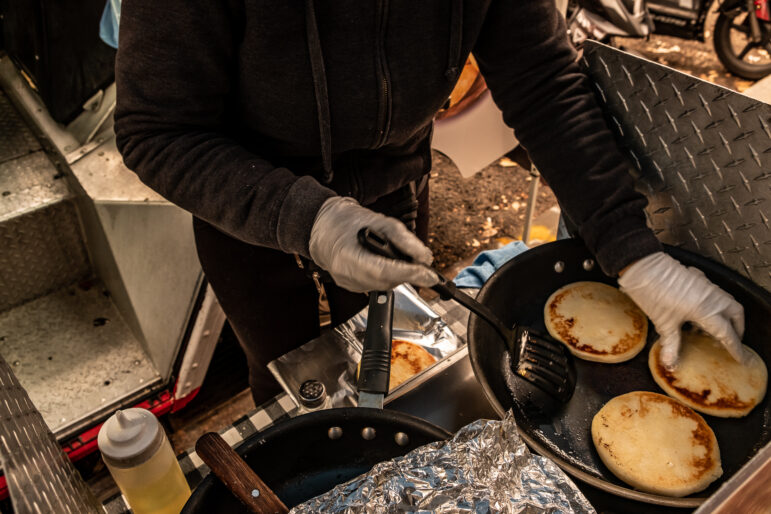
A food vendor in Queens cooks up pupusas. 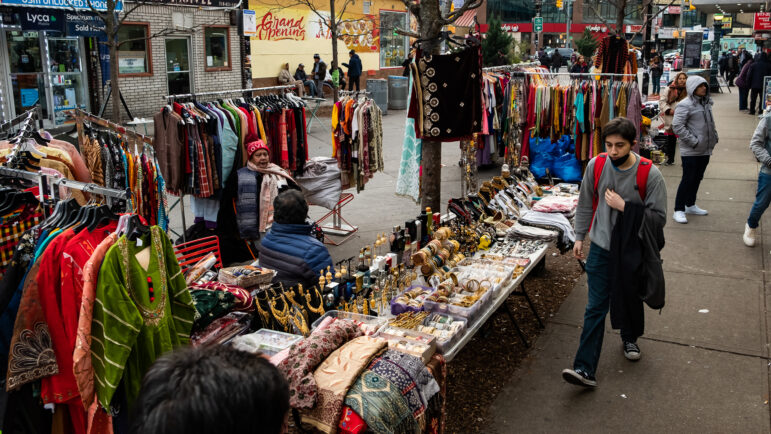
Street vendors near Roosevelt Avenue in Jackson Heights, Queens. 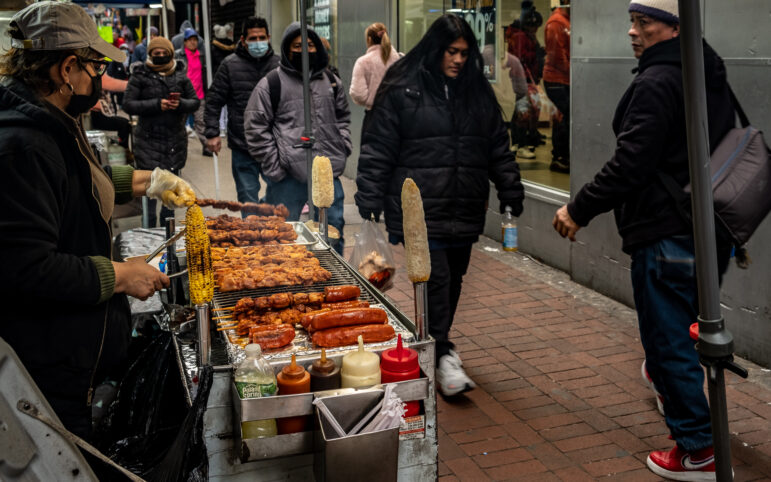
A street vendor on Roosevelt Avenue in Jackson Heights, Queens, the zip code that saw the most enforcement this year by the city’s Department of Consumer and Worker Protection (DCWP).



